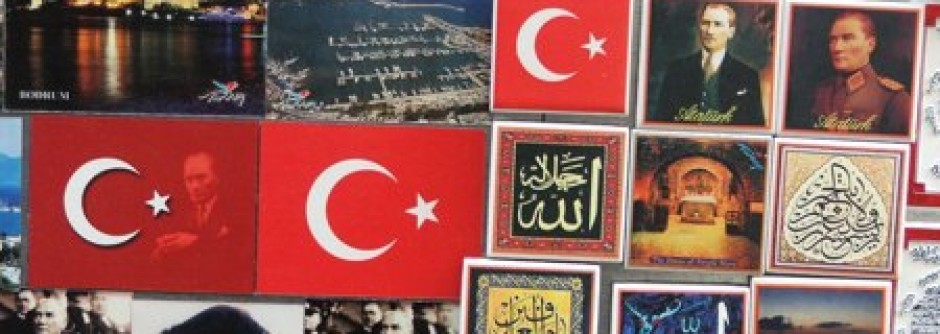Replacing Silence with Voice in Iranian Literature: How postmodernism allows for expression in post-revolution Iran
In her piece regarding reform in modern Iran, Amy Motlagh discusses the stress many Iranian artists felt regarding censorship under the new regime following the Iranian Revolution of 1979. She states that, “many Iranian intellectuals began to suspect that the fate of any modernist was premature death” (Motlaghs, 2012). The censorship that heavily resided over writers and intellectuals created a threat and in some cases an incentive to leave their homeland in search of creative freedom. Many authors currently residing in Iran discuss the inevitable idea of self-censorship; that one will both purposefully and subconsciously censor their own work in fear that it may not be published. In an interview, author Simin Behbahāni discusses how “the nightmare of censorship has always cast a shadow over her thoughts.” (Rahbaran, 2004) Furthermore, she states that most authors will attempt to work with and around censorship by resorting to metaphors and figurative and symbolic language. With these different techniques and approaches to writing, the postmodern literary style begins to emerge not only as a movement but also as a tool to work within censorships guidelines without jeopardizing creativity.
While both Modernism and Postmodernism work to break away from realist literature, they differ greatly in their content. Postmodernism is far more dynamic in structure and content, allowing for multiple story lines and styles to intersect and exist within one story. With this style, there is the possibility to show one thing while ultimately expressing another. Iranian Author and literary scholar Shahriar Mandanipour uses technique in his novel Censoring an Iranian Love Story . Mandanipour studied Political Sciences at Tehran University, graduating in 1980. In 2006, after completing his military service, he traveled to the U.S. as an International Writers Project Fellow at Brown University. Three years later he published Censoring an Iranian Love Story with the help of Random House Publishing Company, one of his few works published outside of Tehran. The book itself was published in English completely over going the Iranian state in which it takes place, allowing it to exist in the global field immediately.
Censoring an Iranian Love Story is structured in a “rough-draft” style. The plot line itself revolves around two young protagonists trying to maneuver romance in an intensely restrictive and separated state. The plot itself works to discuss the societal restrictions Iran forces upon its people. While the linear plot progresses as a love story, the prose itself creates a different plot. Littered with crossed out text and scribbled markings, the book tells a second story of an author struggling to create a book appropriate to be published under the strict censorship of Iran. The first paragraph of the novel reads:
In the air of Tehran, the scent of spring blossoms, carbon monoxide, and the perfumes and poisons of the tales of One Thousand and One Nights sway on top of each other, they whisper together. The city drifts in time. (Mandanipour 2009)
The author tries to lyrically express how all the different elements of Iran work together intimately to create the air and soul that is the city of Tehran, but fearing that the sensuality will stop his book from ever being read, he pulls back and becomes more reserved. Through these reservations and purposeful omissions, he is able to add another dimension to the linear plot. By withholding anything provocative or controversial, he creates two characters bound in personalities lacking lust and passion. So, because the authors is limited in his expression and abilities, so are his characters, who then accurately portray the society in which they live.
While this novel looks to discuss and problematize the censorship of Iranian literature, it ultimately does nothing to work within it. The book was written in English, being translated into six other languages, none of which are Persian. Furthermore, the book itself is banned by the Iranian government. It took Mandanipour leaving Iran, publishing in another language, and working with an American publishing company to get his work onto the global stage. With the knowledge and experience of a man who grew up in the ever-changing climate of Iran and the freedom of an author living in a western society, a piece of literature is allowed to emerge. However, what also must be considered is the necessity of the form he chose to use. Between the internet and cheap printing costs, the market for literature is easily saturated. So, how does an author from a country that usually silences its subjects noticed? It is necessary for authors to work away from the classic novel or memoir style in order to have a voice. Only by bridging two worlds and two cultures, the Iranian author is able to create a piece of literature that not only tells a silenced story but is also heard.
References
Malek, Amy. Memoir as Iranian Exile Cultural Production: A Case Study of Marjane Satrapi’s Persepolis series, Iranian Studies. Vol. 39. 2006.
Motlagh, Amy. Burying the Beloved: Marriage, Realism, and Reform in Modern Iran. Stanford: Stanford University Press, 2012.
Rahbaran, Shiva. Iranian Writers Uncensored: Freedom, Democracy, and the World in Contemporary Iran. London: Dalkey Archive Press, 2004. Print.
Talattof, Kamran. The Politics of Writing in Iran: a History of Modern Persian Literature. Syracuse: Syracuse University Press, 2000. Book.
Mandanipour, S. (2009). Censoring an Iranian Love Story. New York: Random House Inc.
